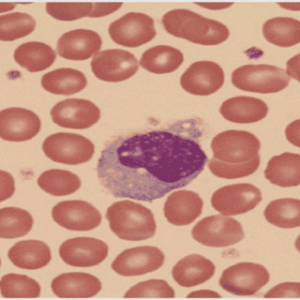(Downloads - 0)
For more info about our services contact : help@bestpfe.com
Table of contents
CHAPTER 1. INTRODUCTION
1.1 Biodiversity and ecosystem functioning in the Anthropocene
1.2 eDNA metabarcoding for the study of past biodiversity
1.3 Workflow in eDNA metabarcoding for past biodiversity study
1.4 Ecological analysis for sedimentary DNA metabarcoding data – quantitative approaches
1.4.1 Defining the operational units of eDNA data for ecological analysis
1.4.2 Site occupancy-detection models
1.4.3 Measuring abundance
1.4.4 Quantifying species diversity
1.4.5 Partitioning samples to find hidden structure
1.4.6 Finding main trends by ordination
1.4.7 Testing the effects of environmental variables on community composition
1.4.8 Testing complex causal relationships
1.5 Reference
CHAPTER 2. CONDITIONALLY AUTOREGRESSIVE MODELS IMPROVE OCCUPANCY ANALYSES OF AUTOCORRELATED DATA: AN EXAMPLE WITH ENVIRONMENTAL DNA (ARTICLE A)
2.1 Introduction
2.2 Materials and Methods
2.2.1 Analysis of the literature
2.2.2 CAR-SODM
2.2.3 Parameter estimation
2.2.4 Simulations: chronosequences
2.2.5 Simulations: spatially autocorrelated dataset
2.2.6 Model performance comparison
2.2.7 Analysis of Empirical data
2.3 Results
2.3.1 Literature analysis
2.3.2 Simulations: chronosequences
2.3.3 Spatial data simulations
2.3.4 Analysis of empirical eDNA data
2.4 Discussion
2.5 Conclusions
2.6 Acknowledgements
2.7 Data accessibility
2.8 Author contributions
2.9 Reference
2.10 Supporting Information
CHAPTER 3. LAKE SEDIMENT DNA REVEALS LONG-TERM IMPACTS OF LIVESTOCK FARMING ON PLANT COMMUNITY COMPOSITION AND VARIABILITY (ARTICLE B)
3.1 Introduction
3.2 Material and methods
3.2.1 Study site and coring
3.2.2 Extraction, amplification and sequencing of extracellular DNA
3.2.3 DNA sequence read filtering and taxonomic assignment
3.2.4 Site occupancy modeling
3.2.5 Ecological analyses
3.3 Results
3.3.1 SedDNA dataset
3.3.2 Temporal changes of communities
3.3.3 Environmental predictors of community changes
3.3.4 Disturbance and temporal variability of communities
3.4 Discussion
3.4.1 Vegetation dynamics in high altitudes
3.4.2 Role of climate change
3.4.3 Impacts of livestock farming
3.5 Acknowledgements
3.6 Data Accessibility
3.7 Author Contributions
3.8 Conflict of interests
3.9 References
3.10 Supplementary Information
3.10.1 Supplementary tables and figures
3.10.2 Testing the impact of flood deposit content on DNA detection
CHAPTER 4. LAKE SEDIMENT DNA REVEALS COMPLEX EFFECTS OF CLIMATE, LAND USE AND VEGETATION ON SOIL EROSION IN A HIGH MOUNTAIN ENVIRONMENT (ARTICLE C)
4.1 Introduction
4.2 Results
4.2.1 Sedimentology and chronology
4.2.2 DNA dataset
4.2.3 Plant community variation
4.2.4 Occurrences of domestic animals
4.2.5 Erosion rate
4.2.6 Interactions among climate, livestock farming, plant community composition, and soil erosion
4.3 Discussion
4.4 Material and methods
4.4.1 Study site
4.4.3 Estimating the erosion
4.4.4 Coprophilous fungi spores
4.4.5 Statistical analyses
4.5 Acknowledgements
4.6 Data Accessibility
4.7 Author Contributions
4.8 Reference
4.9 Supporting information
4.9.1 Supplementary discussion on plant community change
CHAPTER 5. CONCLUSIONS AND PERSPECTIVE


